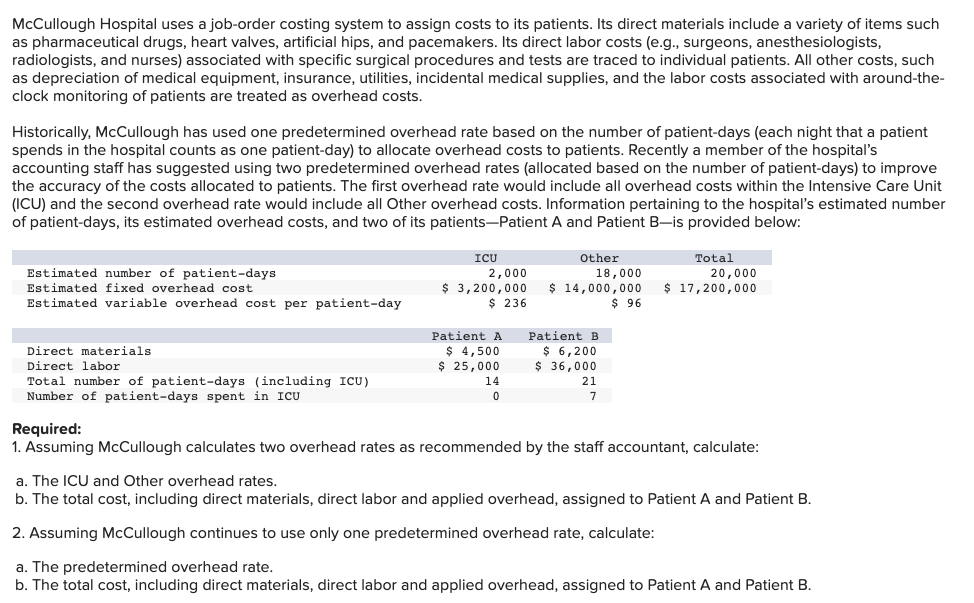




Required: 1. Assume that Landen has historically used a plantwide predetermined overhead rate with direct labor-hours as the allocation base. Under this approach: a. Compute the plantwide predetermined overhead rate. b. Compute the total manufacturing cost of Job 550. c. If Landen uses a markup percentage of 200% of its total manufacturing cost, what selling price would it establish for Job 550 ? 2. Assume that Landen's controller believes that machine-hours is a better allocation base than direct labor-hours. Under this approach: a. Compute the plantwide predetermined overhead rate. b. Compute the total manufacturing cost of Job 550. c. If Landen uses a markup percentage of 200% of its total manufacturing cost, what selling price would it establish for Job 550 ? (Round your intermediate calculations to 2 decimal places. Round your Predetermined Overhead Rate answers to 2 decimal places and all other answers to the nearest whole dollar.) Required: 1. Assume that Landen has historically used a plantwide predetermined overhead rate with direct labor-hours as the allocation base. Under this approach: a. Compute the plantwide predetermined overhead rate. b. Compute the total manufacturing cost of Job 550. c. If Landen uses a markup percentage of 200% of its total manufacturing cost, what selling price would it establish for Job 550 ? 2. Assume that Landen's controller believes that machine-hours is a better allocation base than direct labor-hours. Under this approach: a. Compute the plantwide predetermined overhead rate. b. Compute the total manufacturing cost of Job 550. c. If Landen uses a markup percentage of 200% of its total manufacturing cost, what selling price would it establish for Job 550 ? (Round your intermediate calculations to 2 decimal places. Round your Predetermined Overhead Rate answers to 2 decimal places and all other answers to the nearest whole dollar.) Wilmington Company has two manufacturing departments-Assembly and Fabrication. It considers all of its manufacturing overhead costs to be fixed costs. The first set of data that is shown below is based on estimates from the beginning of the year. The second set of data relates to one particular job completed during the year-Job Bravo. Required: 1. If Wilmington used a plantwide predetermined overhead rate based on direct labor-hours, how much manufacturing overhead would be applied to Job Bravo? 2. If Wilmington uses departmental predetermined overhead rates with direct labor-hours as the allocation base in Assembly and machine-hours as the allocation base in Fabrication, how much manufacturing overhead would be applied to Job Bravo? (Round your intermediate calculations to 2 decimal places.) McCullough Hospital uses a job-order costing system to assign costs to its patients. Its direct materials include a variety of items such as pharmaceutical drugs, heart valves, artificial hips, and pacemakers. Its direct labor costs (e.g., surgeons, anesthesiologists, radiologists, and nurses) associated with specific surgical procedures and tests are traced to individual patients. All other costs, such as depreciation of medical equipment, insurance, utilities, incidental medical supplies, and the labor costs associated with around-theclock monitoring of patients are treated as overhead costs. Historically, McCullough has used one predetermined overhead rate based on the number of patient-days (each night that a patient spends in the hospital counts as one patient-day) to allocate overhead costs to patients. Recently a member of the hospital's accounting staff has suggested using two predetermined overhead rates (allocated based on the number of patient-days) to improve the accuracy of the costs allocated to patients. The first overhead rate would include all overhead costs within the Intensive Care Unit (ICU) and the second overhead rate would include all Other overhead costs. Information pertaining to the hospital's estimated number of patient-days, its estimated overhead costs, and two of its patients-Patient A and Patient B-is provided below: Required: 1. Assuming McCullough calculates two overhead rates as recommended by the staff accountant, calculate: a. The ICU and Other overhead rates. b. The total cost, including direct materials, direct labor and applied overhead, assigned to Patient A and Patient B. 2. Assuming McCullough continues to use only one predetermined overhead rate, calculate: a. The predetermined overhead rate. b. The total cost, including direct materials, direct labor and applied overhead, assigned to Patient A and Patient B. Required: 1. Assuming McCullough calculates two overhead rates as recommended by the staff accountant, calculate: a. The ICU and Other overhead rates. b. The total cost, including direct materials, direct labor and applied overhead, assigned to Patient A and Patient B. 2. Assuming McCullough continues to use only one predetermined overhead rate, calculate: a. The predetermined overhead rate. b. The total cost, including direct materials, direct labor and applied overhead, assigned to Patient A and Patient B. (Round "Predetermined overhead rate" to 2 decimal places. Round other intermediate calculations and final answers to the nearest dollar amount.)











